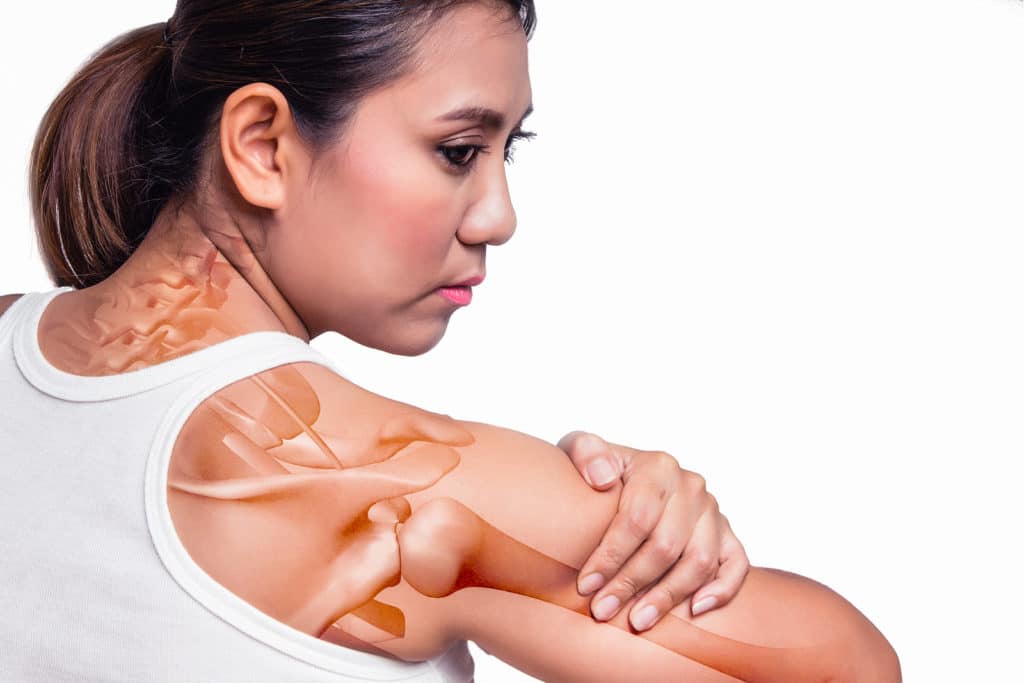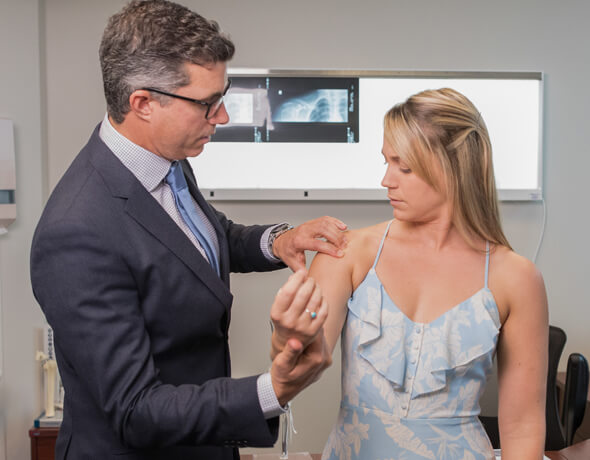Roohealthcare.com – Shoulder Muscle Tears are relatively common, but what causes them and how can they be treated? Shoulder tear types can be classified as partial or full thickness. Partial tears cause damage without completely separating the tendon from the bone, while full-thickness tears cause a hole in the tendon and prevent it from functioning properly. If you suspect you have a tear, visit a physician as soon as possible.
Causes of Inflammation Signs
A rotator cuff is a group of four tendons and muscles in the shoulder. They can be torn due to trauma, overuse, or degenerative changes associated with aging. Traumatic tears often have visible signs of inflammation, such as redness and swelling of the shoulder. Age-related tears, however, may not show any signs at all. Often, they are painful but may be undetectable, and need to be treated to restore normal shoulder function.
Symptoms of a shoulder muscle tear can include bruising, numbness, swelling, and limited arm motion. In some cases, physical therapy is sufficient to ease pain. However, the pain may worsen or prevent you from performing your activities. If your shoulder is painful, see a doctor immediately for an evaluation. Physical therapy can help alleviate symptoms, and your doctor may prescribe pain medication to help you recover.

A rotator cuff tear is a common injury. Patients often experience pain and weakness when lifting their arm, as well as insecurity and jumping sensations. The pain is often so severe that even simple activities can become difficult. MRI is the most common diagnostic procedure for shoulder, and muscle tears. It not only reveals the location of the tear, but can also identify other pathologies in the shoulder joint. In some cases, surgery is the only option.
Using Collagen Patches to Treat Damaged Tissue Areas
The surgeon may use a collagen patch to treat the damaged area of tissue. Cow collagen is used for the patch because human and cow collagen is similar in structure and proteins. A bioinductive implant (REGENETEN) is another option. The implant will promote the growth of new tissue while healing the tear. It is not a permanent fix, but will allow the patient to resume normal activities. When the treatment is successful, the patient may be able to do more of what they loved doing again.
In addition to a shoulder muscle tear, another cause is inflammation of the bursae near the joint. Bursae are small, fluid-filled cavities in the body where tissues move. When they become inflamed, they can lead to bursitis. Moreover, the shoulder is held together by ligaments. When these ligaments are damaged, the shoulder separation occurs. In addition to inflammation, a tear can cause a person to lose his or her mobility and may even result in paralysis.

A tear in the rotator cuff is an injury to a group of muscles and tendons. There are two types of rotator cuff tears: full thickness and partial thickness. A partial thickness tear occurs when a small portion of the rotator cuff is damaged, while a full-thickness tear tears the whole tendon. Ultimately, a full-thickness tear causes complete separation of the rotator cuff.
Consultation when Suffering a Biceps Tendon Tear
Patients suffering from a biceps tendon tear should consult a physician as soon as possible. Usually, this is a nonsurgical procedure, with a few restrictions. During the first three to four weeks, the patient must refrain from heavy arm activity. Once the pain subsides, he or she can return to his regular activities. Patients with a partially torn biceps tendon should rest the shoulder in a protective sling. During this period, patients with a tear in the biceps tendon should also undergo a carefully progressive rehabilitation program. Rehabilitation can take anywhere from four to six weeks.
There are a variety of causes of shoulder pain. Inflammation, repetitive movements, direct blows, and lifting heavy objects can cause shoulder instability. Ultimately, these injuries can make it difficult to perform daily activities. In many cases, however, tendinitis resolves on its own without treatment. Therefore, it’s important to visit a doctor as soon as you notice persistent pain in the shoulder. But don’t worry, there is hope. There are several treatments for shoulder muscle tears.

The best way to recover from a Shoulder Muscle Tear is to rest the area. This is essential because any activity that aggravates the condition is bad for your recovery. If you are playing contact sports, the risk of shoulder injuries is higher. So, don’t overdo it or risk developing a frozen shoulder. It’s best to start slow and easy with a light massage to avoid a stiff shoulder.
Reference:
Brox, Jens Ivar. “Shoulder pain.” Best Practice & Research Clinical Rheumatology 17.1 (2003): 33-56.